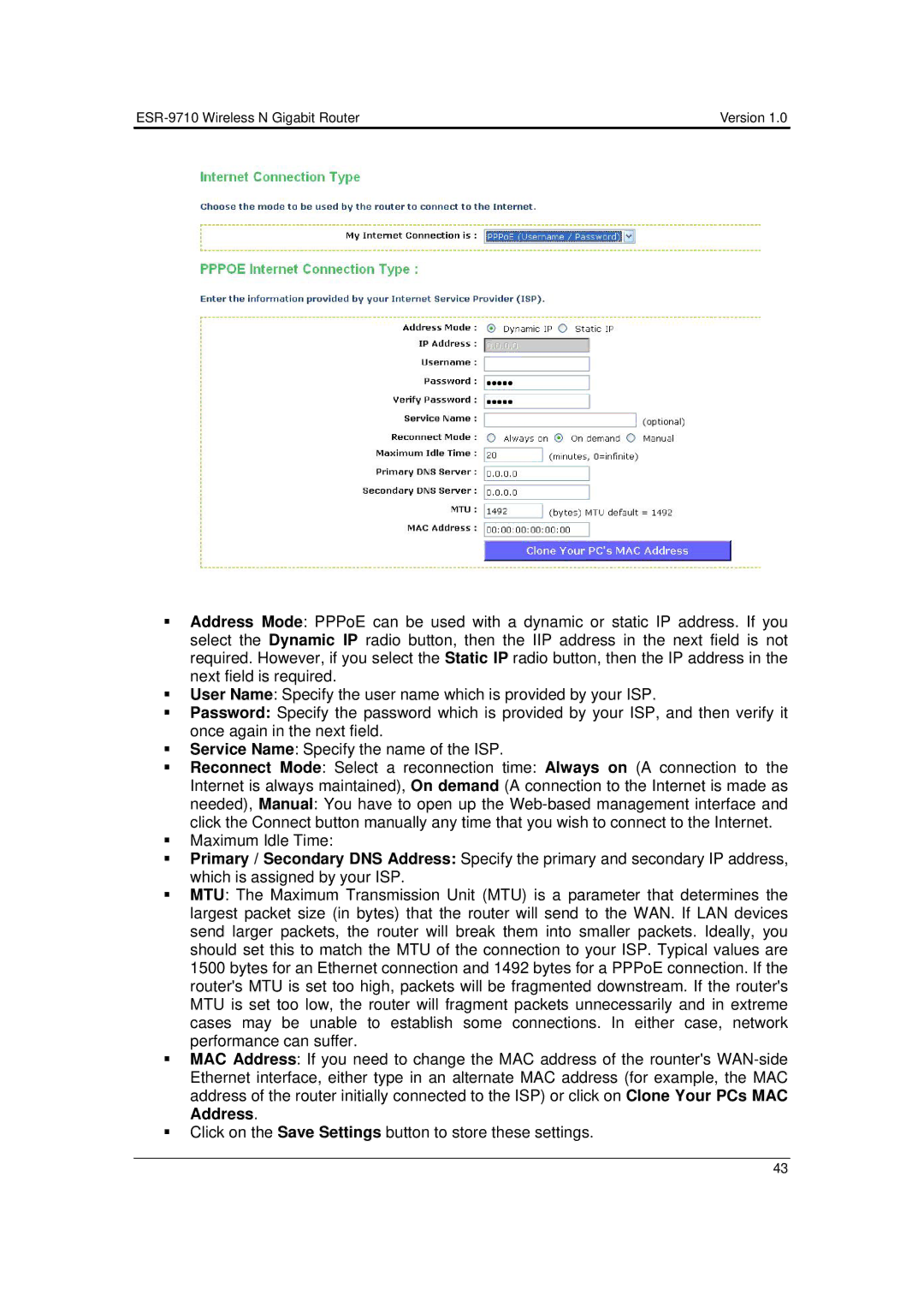
| Version 1.0 |
Address Mode: PPPoE can be used with a dynamic or static IP address. If you select the Dynamic IP radio button, then the IIP address in the next field is not required. However, if you select the Static IP radio button, then the IP address in the next field is required.
User Name: Specify the user name which is provided by your ISP.
Password: Specify the password which is provided by your ISP, and then verify it once again in the next field.
Service Name: Specify the name of the ISP.
Reconnect Mode: Select a reconnection time: Always on (A connection to the Internet is always maintained), On demand (A connection to the Internet is made as needed), Manual: You have to open up the
Maximum Idle Time:
Primary / Secondary DNS Address: Specify the primary and secondary IP address, which is assigned by your ISP.
MTU: The Maximum Transmission Unit (MTU) is a parameter that determines the largest packet size (in bytes) that the router will send to the WAN. If LAN devices send larger packets, the router will break them into smaller packets. Ideally, you should set this to match the MTU of the connection to your ISP. Typical values are 1500 bytes for an Ethernet connection and 1492 bytes for a PPPoE connection. If the router's MTU is set too high, packets will be fragmented downstream. If the router's MTU is set too low, the router will fragment packets unnecessarily and in extreme cases may be unable to establish some connections. In either case, network performance can suffer.
MAC Address: If you need to change the MAC address of the rounter's
Click on the Save Settings button to store these settings.
43
